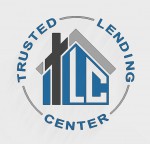What is the typical different in 30 fixed and say either 5/1 or 7/1 adjustable
My question is it really worth it I'd we plan to stay in our house long term by Hogwashjane610 from , California. Nov 26th 2013
 Chris Gummerson (cgummerson11)
Chris Gummerson (cgummerson11)
#397 ranked lender in California - 648 contributions
Usually you would take the stay test, if you plan on staying in the home for X amount of years, you want your mortgage to be as long as that time frame. So if you plan to sell in 5 years, then you can choose and ARM. But if you are not planning on moving, would like to eventually payoff your home, and are comfortable with the 30 yr rate and payment, stick with that. Good luck!
 Bill Ladewig (bill@yourfhaguru.com)
Bill Ladewig (bill@yourfhaguru.com)
#362 ranked lender in California - 34 contributions
For long term take the 30 year fixed while rates are still near historic lows. The rate of 5/1 is approximately 0.75% less than a 30 year and the 7/1 is approximately 0.50% less than the 30.For additional information call me at 866.204.9733 Best regards,Bill Ladewig
 Blake Kleckner (BlakeK)
Blake Kleckner (BlakeK)
#391 ranked lender in California - 261 contributions
The interest rate for a 5/1 can be as much as .875% less than for that of a 30-year fixed, and for a 7/1 as much as .5% less. To put this into proper perspective, for a $300K loan, a 5/1 would be about $151/mo. less costly than a 30-year fixed, and a 7/1 would be roughly $87/mo. less. Your decision about which way to go, obviously, needs to take into consideration how long you plan on being in your home. Quite frankly, though, a 30-year fixed is the most expensive loan you can get. If you're a bit of a risk taker, despite how long you plan on living in your home, saving $9,060 over the next 5 years with a 5/1, or $7,308 over the next 7 with a 7/1, might be worth considering. Granted, your loan's interest rate will adjust at the end of the fixed rate period, but it can adjust down as well as up. Those who chose ARM loans 4 to 6 years ago when they were in the high 5s are now reaping the rewards of interest rates in the low 3s. Again, for a $300K, 30-year fixed that was entered into in November of 2008 at 5.875% that adjusts this month, the interest rate for the next year should be approximately 3.25%, so instead of the $1,775/mo. that has been paid for the past 5 years, the payment for the next year will be $1,358/mo.--a $417/mo. savings. Chances are that interest rates will probably not be lower than they are right now in 5 or 7 years, but the savings that can be realized over these years with an ARM loan may make it a viable alternative, and you can get out of it anytime you want by refinancing or selling your home. As you can see, however, this decision is not necessarily cut and dry. Give me a call 16/7, or email me your phone number so I can call you, and I'll be happy to discuss your options with you. To learn more about me and our mortgage brokerage, click on my picture. When the next page pops up, click on "Website" and you will be redirected to ours. We work exclusively in CA and get loans done fast, typically in less than 30 days, at low interest rates and costs. Representing 46 quality lenders that offer more than 1,000 loan programs, we definitely have something for everybody.
 Jason Vondrak (jvondrak)
Jason Vondrak (jvondrak)
#220 ranked lender in California - 1,741 contributions
If you are planning on staying in your home long term a 30 year loan probably makes the most sense. An ARM will reset once it reaches its adjustment period (5, 7 or 10 years into the loan). When the ARM resets it can move higher or lower depending on the current market. In today's market, rates are only expected to get higher as the economy continues to improve. A fixed-rate will give peace of mind that your mortgage payment will never change no matter how high current rates go.
 Bert Carpenter (BertCarpenter)
Bert Carpenter (BertCarpenter)
#36 ranked lender in Arizona - 2,431 contributions
Good answers here, but even with the "Stay Test", you have to remember that Life has a way of interfering with your plans. I love people that want to, in fact insist on using an ARM. Almost without exception, I get to refinance them into another fixed rate loan because something has messed up their plans and they find themselves staying longer than originally planned. Think of the additional amount you will be paying on a fixed rate loan as a form of insurance. The insurance that guarantees your rate will not rise in the future, because it is likely you will still be in the home when rates start to turn higher. ~ Bert Carpenter, The LoansA2z team of NOVA Home Loans ~ NMLS 40586 ~ Certified by the National Association of Mortgage Professionals and Licensed in California and Arizona ~ www.LoansA2z.com 888-889-9950
 William J Acres (William_Acres)
William J Acres (William_Acres)
#74 ranked lender in Arizona - 8,728 contributions
ARM's are a great alternative if you know you will be moving or relocating in that time frame.. and depending on the size of your loan, the lower rates offered by ARM's could potentially save you thousands.. but in mortgage finance, the lowest payment is not necessary the least expensive payment.. Things happen, and if they do, you could get hurt.. example: You go with the 7/1 ARM, and 7 years later the loan readjusts up a full 4% above your start rate.. you cant afford the payment, and you were laid off from work and currently not employed.. in this scenario, you would not be able to refinance into a fixed rate mortgage or another ARM because you have to have employment to qualify.. I could give you a hundred examples of life's circumstances that could potentially make an ARM very unattractive... Which way is better for you?? only you can say.. .. I'm a Broker here in Scottsdale AZ and I only lend in Arizona. If you or someone you know is looking for financing options, feel free to contact me or pass along my information. 480-287-5714 WilliamAcres.com
 Samantha Taylor (samantha)
Samantha Taylor (samantha)
#368 ranked lender in California - 29 contributions
In case of 5/1 adjustable rate mortgage, interest rate and monthly payments remain fixed for the first 5 years. From the 6th year, interest rates are adjusted every year. The payments are thus changed every year till the loan period is over. The same logic goes in case of a 7/1 adjustable rate mortgage. On the other hand, in case of 30-year fixed rate mortgage, the rate of interest and hence the monthly payment amount remains fixed throughout the 30 years. In case you want to stay in the house for a very long time, then a 30-year fixed rate loan will be a better choice. Again, if you want to stay in the house for a shorter period of time, a 5/1 or a 7/1 adjustable rate mortgage will be a better choice.
 Phil Dumouchel (PhilDu)
Phil Dumouchel (PhilDu)
#32 ranked lender in South Carolina - 2,249 contributions
Unless you are 98% certain you will be moving in the next 5-7 years, the 30 year is the safest option. But it depends on your appetite for risk as well. As pointed out, the larger the loan the bigger the difference in payment.
Ask our community a question.
